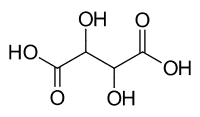Tim James: On wine additives
By Christian Eedes, 16 December 2014

3
Craig Hawkins has a great (and often quirky) sense of humour, but when he chose “Made from grapes” as the motto of his Testalonga wine-brand, he wasn’t joking. What he really means is “…and ONLY grapes” – though, bringing a touch of pragmatism to his idealism, he will add a judicious touch of preserving sulphur when necessary. And I wouldn’t be surprised or unduly censorious if he uses a bit of inert gas when bottling.
But just think what the tightly controlled South African liquor industry does allow winemakers to add. Some 66 items, according to my quick count in the Liquor Products Act, from Arabic gum to yeast mannoproteins. Via such tasty-sounding items as di-ammonium glycero phosphate and polyvinyl polypirollidone. I confess my winemaking knowledge is so basic that I have no idea why they, or hydrogen peroxide, would be grabbed off the shelf by winemakers less particular than Craig.
Some additives are a little easier for the reasonably informed lay-person to comprehend, such as some proteins of animal origin that may be used for fining wine: egg white, milk, and isinglass (which comes from the dried swim bladders of fish!). I wonder how many strict vegetarians and vegans know the risk they run – though they might prefer that to knowing that potassium ferrocyanide was used (legal here, though banned in many countries). Anyway, I dare say even Craig might include an inadvertent additive like a baby slug or a drunken fly, to which it would be impossible to alert such people.
I’m sure that many of these legal additives are seldom used (when last did you find gold flakes in your wine?), but very many are, and with great regularity. I’d guess, as a rule, that the more “industrial” the size of the winemaking operation, the more likely the winemaker is going to resort to additives – either to make up for shortcomings in the grapes or to streamline the winemaking process and make its outcome more predictable.
Addition of acid, for example, is widespread, however, though less so among the Cape’s serious wine-producers today than it was 20 and 30 years ago. Yeast inoculation is also common, but again there are more and more ambitious, terroir-minded producers trying to do without. And they’re just the most obvious.
It’s not, of course, only South Africa that is so liberal in tolerating additives. All jurisdictions allow for many. Comparisons between them are difficult (especially given restrictions on various processes and additives), but one was attempted a few years back by Vashti Galpin in her excellent Cape Wine Masters dissertion (available here), which looked at a range of countries. Her conclusion was that “New Zealand appears the most liberal … followed by Australia, South Africa, and then the EU and the USA”.
Leaving aside such niceties as gold flakes, she says that the major differences are “whether (and when) sugar is permitted, the range of acids permitted, water use, antifoaming agents, addition of colouring or (grape-extracted) flavouring, use of wood, ion exchange resins and other technological processes”.
So much for this most natural-seeming of beverages. As with all aspects of wine, generalisations are impossible, with a label like Testalonga at the one end and you-guess-who at the other. The unifying factor across the world is that – apart from those damn sulphites and also various allergens in some countries – there is no requirement to list ingredients, as there widely is for other food products. There should be. We wine-lovers (not just vegans and athsmatics) are entitled to know what’s in the bottle. If the winemaker’s list stops short at grapes, how wonderful is that?








David C | 16 December 2014
1. Acacia/Arabic gum
2. Activated animal or vegetable charcoal
3. Agar-agar
4. Ammonia
5. Ammonium bisulphide
6. Ammonium phosphate
7. Ammonium sulphate
8. Ammonium sulphide
9. Argon
10. Ascorbic acid
11. Bentonite
12. Calcium alginate
13. Calcium carbonate
14. Calcium hydroxide
15. Caramel
16. Carbon dioxide
17. Carboxy methyl cellulose
18. Casein
19. Citrates of potassium, calcium and sodium
20. Citric acid
21. Concentrated must
22. Copper sulphate
23. Di-ammonium glycero phosphate
24. Di-ammonium phosphate
25. Dimethyl-dicarbonate
26. Egg albumen
27. Enzymes
28. Evaporated milk
29. Filtering aids of inert material
30. Gelatine
31. Gold flakes
32. Hydrogen peroxide
33. Isinglass
34. Lactic acid
35. Malic acid
36. Malolactic fermentation bacteria
37. Meta-tartaric acid
38. Milk
39. Must
40. Nitrogen gas
41. Oxygen
42. Phytates
43. Pimarizin
44. Polyvinyl polypirollidone
45. Potassium alginate
46. Potassium bicarbonate
47. Potassium bitartrate
48. Potassium carbonate
49. Potassium ferro cyanide
50. Potassium hydroxide
51. Potassium meta bisulphide
52. Potassium sorbate
53. Silicasol
54. Sodium alginate
55. Sodium carbonate
56. Sodium hydroxide
57. Sodium meta bisulphide
58. Sorbic acid
59. Spirit derived from grapes
60. Sulphur dioxide gas
61. Sweet reserve
62. Tannin
63. Tartaric acid
64. Tiamine
65. Wood
66. Yeasts and yeast nutrients
67. Yeast mannoproteins
LIQUOR PRODUCTS ACT 60 OF 1989
David C | 16 December 2014
Had the list on hand from a t-shirt I made for last year’s Swartland Revolution.
Ryan | 16 December 2014
Why has the strict rules about food labelling not hit the wine industry? It seems like a global phenomenon where no country forces their wine producers to supply nutriitonal information or what has been added to a wine. Packaged fruit juice for example has to strictly list all the proteins, sugars, carbohydrates etc as well as ingredients.
Only reason that I could think of is that it will ruin romantic back label stories 🙂